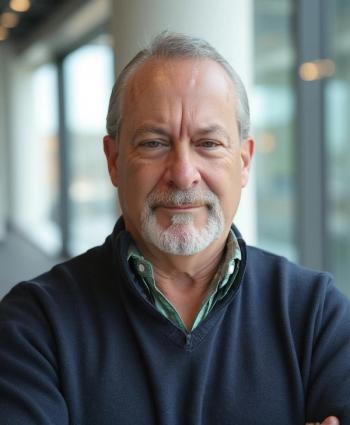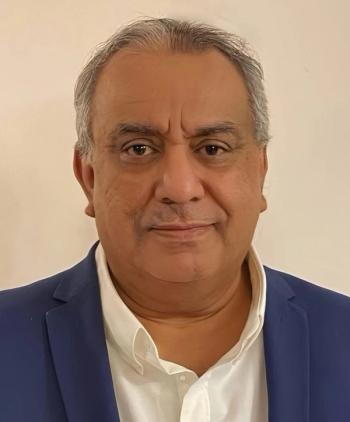
The no. 1 disease at your office isn’t clinical
New physician survey sheds light on physician burnout-an epidemic that affects you and your patients.
There’s a growing and critical health epidemic running rampant in doctors’ offices today that requires triage, treatment and a dramatic change in how primary care physicians practice medicine.
The condition is physician burnout and the symptoms are severe.
Other studies suggest the problem isn’t getting better; in fact, it may be getting worse. According to a Mayo Clinic
This is not the way docs fresh out of med school dream of practicing and is a far cry from the fictional lives of their TV heroes-a la Dr. Marcus Welby, Dr. Mark Greene, Dr. Gregory House-who have the luxury of time to get to know and treat their patients, research anomalies and seemingly do no paperwork. Sure, these are fictional characters, but the further we drift from this ideal, the more concerning the problem of burnout-and its impact on patients. Physician burnout is linked with negative consequences, such as delayed or even missed diagnoses and over-medicating patients.
Yet even the most burned-out physician isn't without hope for change. By understanding the causes and effects of burnout, including its impact on patients, physicians can make changes that will leave them feeling less stressed, and more fulfilled. And by putting new solutions into practice, physicians can stop burnout from escalating and improve their own health.
UNDERSTANDING BURNOUT’S BURN
While there are many factors that influence burnout, one of the most common complaints among physicians is that they’re working longer hours. They're often spending so much time on paperwork that they don’t have enough time to fulfill their true calling-caring for patients.
When doctors have too many patients and not enough hours in the day to see them, the result is rushed appointments. And more than half of physicians (54 percent) admit they often end up writing prescriptions or referring patients to specialists because of time constraints. This figure is alarming when we consider that
What physicians need is more time-time to probe deeper into a patient’s concerns, time to consider the total health of patients with chronic conditions and time to encourage (or engage patients in) preventive strategies. However, at the end of the day, physicians sometimes leave the office feeling mentally overwhelmed, asking themselves whether the 10-minute appointment shortchanged their patients: Did I miss anything? Did I order the right tests?
Unfortunately, burnout in the workplace also takes a toll on physicians' personal lives. According to the Ipsos/MDVIP survey, the majority of primary care physicians say work stress negatively impacts their ability to make optimal food choices, enjoy a fulfilling sex life, take vacations and pursue activities or hobbies.
As any doctor would tell a patient, this way of life is a recipe for cardiac arrest and a slew of other chronic health issues, including depression, diabetes and more.
When physicians can’t practice what they preach-by eating right, exercising regularly and implementing stress-reduction techniques-patients are less motivated to take care of their own health. This creates a larger vicious cycle with long-term impact on our nation’s overall health that is difficult, but not impossible, to break.
HELPING DOCTORS
With such a bleak snapshot of physician burnout, many are wondering how to break the cycle without having to quit medicine altogether. As physicians who have successfully reduced their stress will tell you, it requires a dedicated commitment to making changes.
Some physicians are trying to alleviate their workload by recruiting other care providers, such as nurses, physician assistants or medical aides. While this approach allows you to offset a greater number of responsibilities to physician extenders, an
Another potential way to ease burnout is to consider whether your practice's existing EHR is truly delivering new efficiencies, such as easing data-collection redundancies or making it easy to quickly retrieve lab or X-ray results. If the time you spend entering data is adding hours onto your schedule and only increasing your screen time but not your face time with patients, you may be better off with a new system.
There are numerous educational programs designed to help physicians combat burnout, but they don’t always get to the root of the problem, and they require something physicians are already lacking-time.
A growing number of physicians have found the answer to curing burnout by rethinking how they practice medicine. Transforming their practice to a membership-based healthcare model–often referred to as retainer-based or concierge medicine–is helping physicians address what’s causing their burnout. For example, in the MDVIP network, physicians maintain smaller practices, which enables them to spend more time getting to know each patient and provide highly individualized care using advanced diagnostics that identify risk and guide treatment. They have fewer appointments, longer consultations and closer, more fulfilling relationships with their patients. They have time to think, and most importantly, they have time to truly care and take better care, not only of their patients, but also their own well-being.
The benefits of such a model extend to their patients, who experience greater satisfaction and improved outcomes. Ultimately, patients want a motivating doctor who has time to listen, get to know them and is a true partner in their health-not an encumbered physician who immediately reaches for the prescription pad or the doorknob.
The physician must heal thyself. The healthier and more fulfilled physicians are, the more likely their patients will follow. It’s time to find a solution that allows you to be the doctor you set out to be.
* Ipsos/MDVIP survey of 200 primary care physicians, September 2017.
Dr. Andrea Klemes was in private practice for 10 years as a board-certified internist and endocrinologist in Tallahassee, Florida. She is currently Chief Medical Officer for MDVIP, where she also serves as the executive and organizational leader of MDVIP’s Medical Advisory Board that supports quality and innovation in the delivery of the healthcare model drawing expertise from the affiliated physicians. She has published numerous peer-reviewed articles on topics including osteoporosis, patient outcomes and healthcare savings and policy. Prior to joining MDVIP, she worked at Procter & Gamble in the areas of personal healthcare, women’s health and digestive wellness and served as North American Medical Director for bone health.
Newsletter
Stay informed and empowered with Medical Economics enewsletter, delivering expert insights, financial strategies, practice management tips and technology trends — tailored for today’s physicians.














